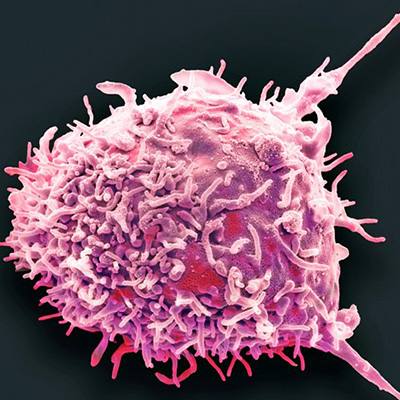-
Individualized Medicine
Mayo’s new ‘omics’ strategy leaps into the future

Imagine a future where healthcare is tailored precisely for you, right down to the molecules deep inside your cells. Targeted treatments and preventive strategies are customized to your genome. Your personal medical roadmap outlines hereditary genetic variants, provides guidance on environmental risks and offers strategies for maintaining heart health and preventing cancer, making it as distinct as your DNA.
At the core of this future are "omics" technologies, which measure and analyze various molecules at multiple levels within human organisms, cells and tissues, where many diseases originate.
Building on this foundational science, Mayo Clinic’s Center for Individualized Medicine has launched a new "omics" strategy designed to integrate precision medicine into everyday clinical practice. The approach will support Rare Disease Omics, Population Omics, Functional Omics and Digital Omics.
"This new strategy represents a monumental leap into a new era of medical science. These four interconnected 'omics' pillars will help us magnify our impact, drive advancements in individualized medicine and redefine patient care," says Konstantinos Lazaridis, M.D., the Carlson and Nelson Endowed Executive Director for Mayo Clinic's Center for Individualized Medicine.
New era of medical science

Each omics pillar brings together experts from various medical specialties with advanced artificial intelligence (AI) technologies to investigate vast omics datasets, including genomics (study of genes), proteomics (study of proteins), exposomics (study of environmental exposures), metabolomics (study of metabolic processes), transcriptomics (study of RNA transcripts) and other omics fields.
Omics research offers transformative possibilities for predicting and diagnosing conditions like chronic diseases, aging, inflammatory conditions and cancer while also enabling the development of personalized treatments tailored to an individual's unique biological characteristics.
Rare Disease Omics

In the Rare Disease Omics pillar, researchers and clinicians are working to improve clinical diagnoses in departments across the institution through multi-omic testing. They are developing a discovery framework to accelerate the development of new therapies for people with rare diseases — defined as conditions affecting fewer than 200,000 people. Altogether there are more than 7,000 known rare diseases affecting an estimated 25-30 million people in the U.S.
"We're also developing AI algorithms to identify Mayo Clinic patients within family and general medicine who might benefit from genetic testing, with the goal of enhancing diagnostic accuracies and guiding individualized treatments," says Timothy Curry, M.D., Ph.D., the William O. Lund, Jr. and Natalie C Lund Program Director for Clinomics, and the associate director of Practice Implementation at the Center for Individualized Medicine. Dr. Curry leads the center's Rare Disease Omics pillar.
Population Omics

The Population Omics pillar aims to make genomic testing universally accessible and integrated into patient care, particularly focusing on actionable genetic variants for various diseases. Additionally, this pillar is integrating polygenic risk scores into clinical screenings, which assess a person's genetic predisposition to certain diseases based on multiple genetic variations.
Dr. Lazaridis, leader of the Population Omics pillar, says a key focus is on advancing the understanding of multi-omics, including how environmental exposures, combined with genetic factors, influence disease and response to treatments.
"With the launch of our new omics research study called Tapestry 2.0, we're analyzing biological data from more than 10,000 participants to uncover patterns and correlations of environmental-related links interacting with host genetics to diseases such as rheumatoid arthritis, fatty liver disease and mental health disorders," Dr. Lazaridis says.
Functional Omics

The Functional Omics pillar is dedicated to streamlining research by developing novel models to speed the pace of scientific discovery. Key elements of this pillar include the creation of specialized labs for cultivating cell lines and advancing technologies such as epigenetics and single-cell RNA sequencing. These technologies are important for studying the mechanisms of gene activation and deactivation, as well as analyzing the functions of individual cells.
Additionally, this pillar investigates microorganisms with potential therapeutic benefits, validates strategies for gene therapy and analyzes biological age and indicators of patient frailty.
"To increase our understanding of the expression and function of genetically mediated disease, we're building precision lab models that represent specific genetic variants and exploring the role of age measurements in disease processes. Additionally, we're expanding our understanding of the microbiome and how it will inform patient management," says Eric Klee, Ph.D., the center's Everett J. and Jane M. Hauck Midwest Associate Director of Research and Innovation. Dr. Klee is the leader of the Functional Omics and Digital Omics pillars.
Digital Omics

The Digital Omics pillar is focused on making genomic data more accessible and actionable for healthcare providers by integrating it directly into medical records. This initiative involves partnering with institutional leaders to establish data governance structures and standardized definitions for omics data across Mayo Clinic. By providing easier access to multi-omics data, including data from projects like TAPESTRY 2.0, the pillar aims to reduce research obstacles and foster innovation.
"We are living in a transformative time where big data and AI will create tremendous opportunities for improving how we prevent and care for disease," Dr. Klee says.
The center's innovative omics strategy, powered by AI and structured around key pillars, is expected to enhance disease diagnosis, prognosis and treatment. This approach is already providing a framework for scalable approaches to serve the individual needs of patients.








